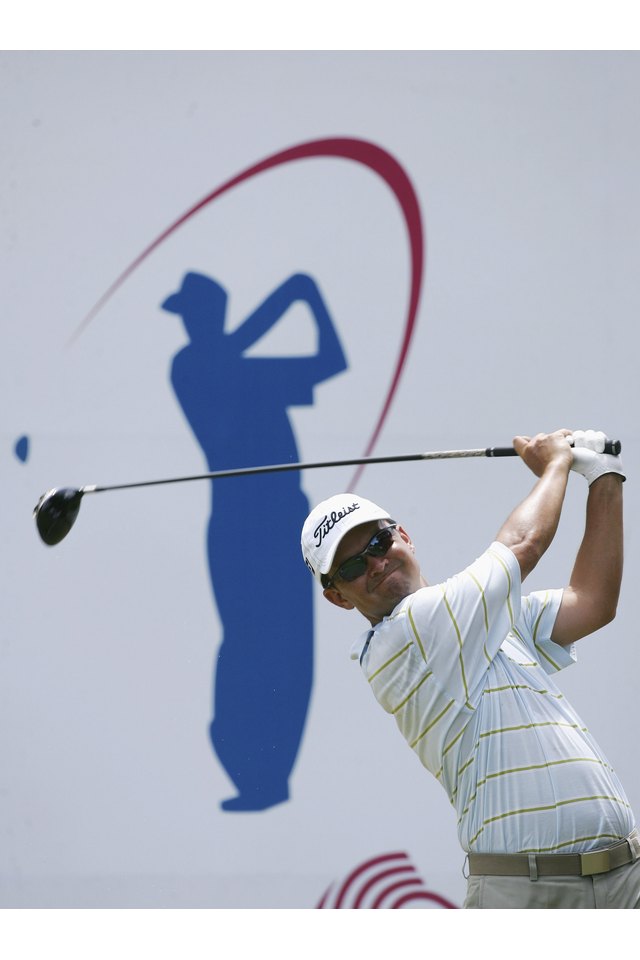Graphite versus Steel Shafts

Tiger Woods is a man of steel when it comes to golf shafts, but that doesn't mean you should be. What about amateurs? Are steel or graphite shafts for golf clubs better? There is not a clear-cut answer because both have advantages and disadvantages when hitting a golf ball.
In almost all cases, your driver and fairway woods will have graphite iron shafts. The real question comes down to the irons and sometimes your putter. The status quo has always been that professionals and low-handicap golfers use steel shafts in their golf swing, while amateurs and beginners benefit more from lighter weight graphite shafts. This is not necessarily the case these days. Here are the differences between graphite vs steel shafts.
What are the benefits of Steel Shafts?

The main benefit of the steel-shafted club is it creates more vibration dispersion up the shaft to the player's hands which makes it a favorite among those in the PGA tour. Skilled players often desire this feedback. A skilled player can often tell what they may have done wrong or right by the feel of the swing and impact as opposed to just looking at ball flight; more so than high handicappers
The steel-shafted club is heavier than the graphite club. Players with a high clubhead speed may find that this fits their faster swing speed better and allows them more control. Players who tend to swing too fast also will benefit from heavier clubs. This is why heavy hitters like Bryson Dechambeau with fast swing speeds prefer an iron golf club shaft. Clubs with steel iron shafts are less expensive than graphite clubs which can make name brand golf equipment like Callaway Mizuno, Mitsubishi, and Taylormade slightly more affordable.
Disadvantages of Steel Shafts

Mishit shots are apt to leave one's hands stinging due to the vibrations imparted through the shaft flex. The heavier weight will slightly reduce swing speed, resulting in a difference of up to 4 miles per hour that translates into a loss of about 10 yards due to a lower ball speed. This can be devastating for those with a slower swing speed. Steel- shafted clubs are more likely to irritate chronic hand, arm or shoulder problems on the golf course than a graphite club, due to the weight and extra stiff rigidity. This is why many older golfers use graphite shafts to make their golf game a bit less painful.
Benefits of Graphite Shafts

Graphite golf shafts have lighter shaft weight than steel shafts, resulting in an increase in swing speed and distance. This shaft material is particularly beneficial to players with slow swing tempos compared to its steel counterparts.
Most golfers can realize an increase of at least 5 yards for each club. Graphite shafts are easier to swing for someone who has hand, arm or shoulder problems or for high handicap golfers. Vibrations are muffled on mishits and less painful.
Disadvantages of Graphite Shafts
Graphite shafts are less rigid than steel golf shafts and tend to have more whip and flexibility. Though this can be an advantage for a player with a well-grooved swing, it also can exaggerate the problems of a poor swing and may affect accuracy. Graphite shafts are more expensive and typically add about 15 percent to 20 percent to the cost of a set of irons.
Considerations
The choice comes down to what feels best for you and the skill level you have in your game. It is no longer true that steel shafts are more durable than graphite shafts. Either set will last a lifetime if your equipment is treated properly. Graphite shafts get the edge in the "last set of clubs I'll ever own" department because they tend to be easier to use for elderly golfers. Take time in deciding on your personal preference. Try out a lot of clubs, a lot of times. Quality clubs are a significant investment and should last many years.
The best way to determine what shaft options are best for you is to go to a club fitter and get a club fitting. Most have an indoor simulator with a launch monitor which can tell you which type of golf shaft you need. It can also get you custom clubs meant for your height and play style.
Writer Bio
Blaise is a Freshman at the University of Missouri, studying Journalism at the world-renowned J school. He is the host of the Fast Five Podcast with his Childhood friend Sam Sinclair and interns with the Sports AI platform Pine Sports. He is a huge fan of the Kansas City Chiefs and the St Louis. Cardinals and hopes to cover them professionally in his near future.
